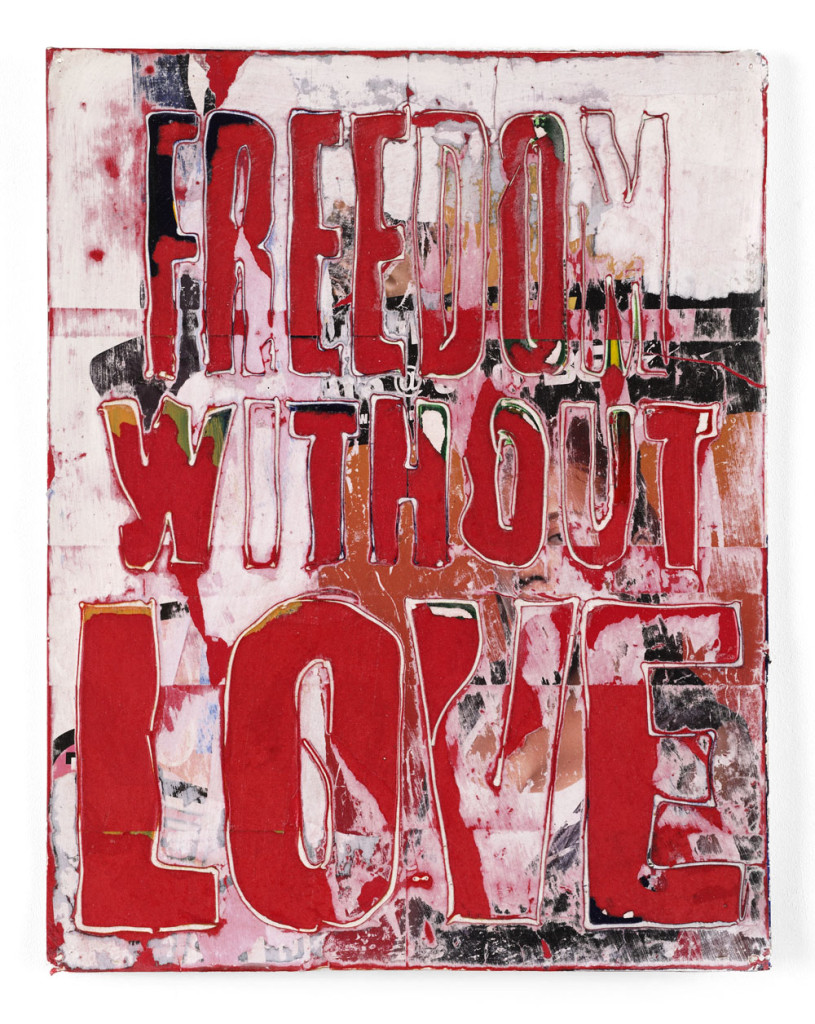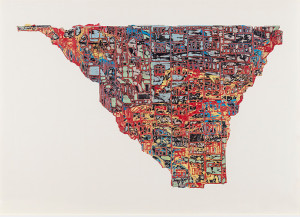
Mailing a Country, 2014
About Mark Bradford:
Known for his expansive multi-layered collaged paintings incorporating materials found in the urban environment, Mark Bradford’s work addresses spontaneous systems and networks that materialise within cities, such as alternative economic exchange, itinerant communities, and other socio-political pathways.
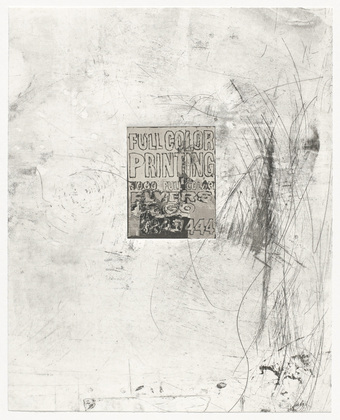 This work, ‘Untitled 2012’, is in the collection of MoMA in New York.
This work, ‘Untitled 2012’, is in the collection of MoMA in New York.
Visually complex and often cartographic in form, Bradford’s paintings incorporate elements of the everyday – from end papers used for perming hair (associated with his background in hairdressing) to remnants of billboard posters, polyester cord, caulking, bleaching agents and carbon paper. Using such materials gathered within the locale of his studio in South Central Los Angeles, Bradford’s paintings are ostensibly abstract in a formal sense, but referential in content. At first glance, the work corresponds with that of ‘Affichiste’ artists such as Raymond Hains and Jacques Villeglé; yet Bradford is less concerned with a commentary on consumerism, than with the specific conditions that shape communities. This is most clearly identified in the works featuring what he terms as ‘merchant posters’ found in his immediate neighbourhood. Affixed to cyclone fencing, erected around buildings left derelict after the 1992 Los Angeles riots, these billposters advertise, in bold graphics, services targeted directly at local inhabitants. The topics – ranging from foreclosure and paternity testing to loan credit and pest control – coalesce to form a narrative of desolation and, as Bradford has observed, reveal ‘the invisible underbelly of a community’. In ‘A Thousand Daddies’, for example, multiple billboards advertising child custody services provide the foundation, with the letters broadly outlined in cord, over which layers of other posters and paper are pasted before being sanded back in part. This process of décollage or accretion reveals glimpses of luminous colour from the notices buried within.
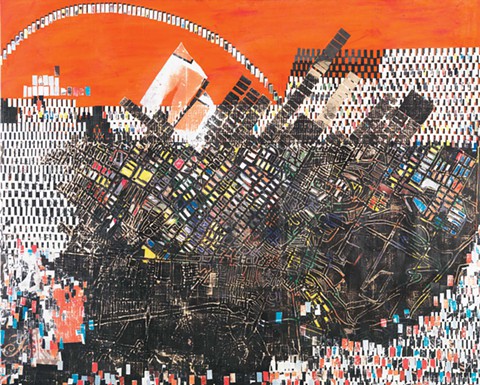 Scorched Earth, 2012.
Scorched Earth, 2012.
Bradford’s practice also encompasses video, prints and sculptural installations. For the 55th Carnegie International in 2008, he created an installation for the rooftop of the museum. In reference to the stranded victims of Hurricane Katrina, he spelled out the words ‘HELP US’ in white stones, which was only visible from an aerial viewpoint. Later that year, Bradford created ‘Mithra’, regarded as one of the most iconic works of the ‘Prospect: New Orleans’ biennial. A three-storey ‘ark’ made from stacked shipping containers positioned on a vacant plot in the Lower Ninth Ward, the sculpture’s immense surface was covered in battered poster boards and advertising found around the city in the wake of the disaster. As one commentator noted, it could be simultaneously read as ‘a monument to futility or a symbolic cry for salvation’.
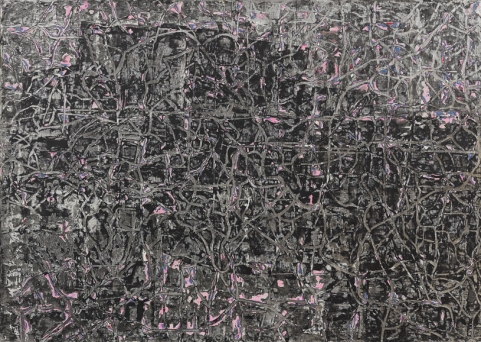 Among Wires and Blood, 2013.
Among Wires and Blood, 2013.
Mark Bradford was born in 1961 in Los Angeles, where he lives and works. He has exhibited widely, including group shows such as the 12th Istanbul Biennial (2011), Seoul Biennial (2010), the Carnegie International (2008), São Paulo Biennial (2006), and Whitney Biennial (2006). Solo exhibitions include, Aspen Art Museum (2011), ‘Maps and Manifests’ at Cincinnati Museum of Art (2008) and ‘‘Neither New Nor Correct’ at the Whitney Museum of American Art (2007). In 2009, Mark Bradford was the recipient of the MacArthur Foundation ‘Genius’ Award. In 2010, ‘You’re Nobody (Til Somebody Kills You), a large-scale survey of his work was presented at the Wexner Center for the Arts, Columbus, before travelling to the Institute of Contemporary Art, Boston; Museum of Contemporary Art, Chicago; Dallas Museum of Art; and San Francisco Museum of Modern Art.
(text website white cube 2014)

